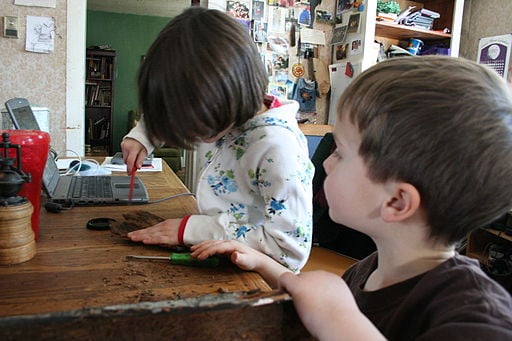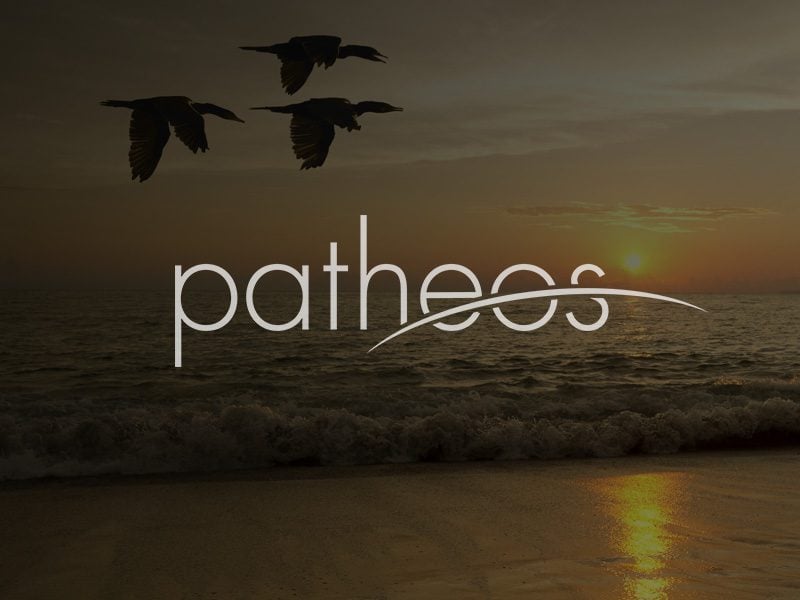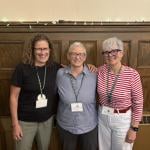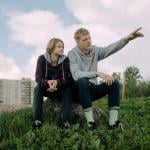“It’s so amazing, Momma. Your bum is so large it can cover up the entire stool.”
“Yes, thanks for noticing.”
“Seriously, it covers like the whoooole thing.”
Ezra seems to find no end of things to which he can compare the size of my “bum.” The stool comparison happened this morning, while we were homeschooling at Starbucks as our car was being repaired.
According to Ellen Galinsky, the author of Mind in the Making, I should probably have followed up on Ezra’s astute observation and helped him expand the connections he was making. I could have asked him to estimate how many of his bums it would take to fill up the stool. Or how many bums he thought it would take to get us back to the car dealer. Or I could have drawn sets of bums on a paper and asked him how many more he would need with each set to fill up ten stools.
All of this bum math would have promoted the fourth of Galinsky’s “seven essential life skills that every child needs” — making connections. It entails figuring out what’s the same and what’s different, sorting things into categories, and connecting objects and ideas in novel ways, and is at the “heart of learning.” Much of the chapter devoted to this skill focuses on developing a math sense and promoting creativity through the arts.
Her specific suggestions were: play more board games, which unlike cards and video games, have been shown to promote math skills; use lots of types of objects and symbols to get a sense of the number line; help kids estimate (distances, time, amounts) – lots and lots of estimation to get around rote rule memorization; create sets and play games that involve sets; and encourage your kids to be involved in the arts, especially performing arts.
Charlotte Mason, a 19th-century educator whose books I am reading along with Galinsky’s, would definitely not advocate for bum math. She was far too proper for that. But she would have agreed with a lot of the research presented in Mind in the Making.
Mason’s ideas to promote the skill of making connections? Walk around in nature. (That’s her solution to most all problems of pedagogy, psychology or theology.) She wrote, “Take any object from nature, and it relates to others like it, variations in a species or group. Whatever you learn about it can be applied to the science of all the others like it.”
Like Galinsky, Mason also also likes the use of objects and estimations to promote what she called arithmetic skill (no silly notions of number sense for Miss Mason). She wrote, “He should learn about weights and measures first hand: by weighing and measuring things…let him try to estimate weights and measures,” and “Dominoes, beans, line graphs on the blackboard help children to grasp the concept of a larger number by using a smaller number.”
Out of all the skills I’ve reviewed so far, this was the first that didn’t make me feel like an inadequate loser. While I didn’t take advantage of Ezra’s bum connection (even I can take only so much humiliation), I see connections everywhere. And I usually stop what we had planned to do to go with one when it presents itself. We stop reading a book about China to find pictures from our last vacation that bring the book to life. Then we print them and stick them up on our timeline, the same timeline that has the end of hunting and gathering in China, the reign of the first emperor, the year of the first mass produced cars, and years of our births. The boys simply love the timeline. So do I.
If you are a math geek, I highly recommend reading the Connections chapter of Galinsky’s book or the arithmetic sections of Mason’s. Not because you’ll learn so much, but because it will help you feel superior to other parents. And if your kids have recently critiqued the width of any of your body parts, you just might need a little affirmation!











